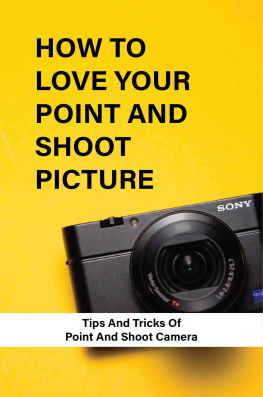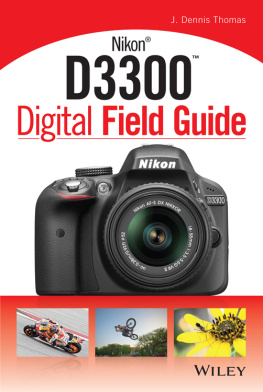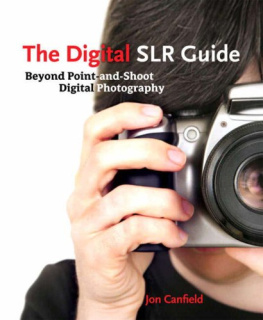Digital Astrophotography
Digital Astrophotography
A Guide to Capturing the Cosmos
Stefan Seip
Stefan Seip
www.astromeeting.de
Editor: Gerhard Rossbach
Copy Editor: Joan Dixon
Translation: Elke Schulz
Layout and Type: Josef Hegele
Cover Design: Helmut Kraus, www.exclam.de
Printer: Friesens Corporation, Altona, Canada
Printed in Canada
ISBN: 978-1-933952-16-1
1st Edition
2008 by Rocky Nook, Inc.
26 West Mission Street, Ste 3
Santa Barbara, CA 93101-2432
www.rockynook.com
First published under the title Astrofotografie digital
2006, Franckh-Kosmos Verlags-GmbH & Co. KG, Stuttgart, Germany
Library of Congress catalog application submitted
Distributed by OReilly Media
1005 Gravenstein Highway North
Sebastopol, CA 95472-2432
All product names and services identified throughout this book are trademarks or registered trademarks of their respective companies.
They are used throughout this book in editorial fashion only and for the benefit of such companies. No such uses, or the use of any trade name, is intended to convey endorsement or other affiliation with the book.
No part of the material protected by this copyright notice may be reproduced or utilized in any form, electronic or mechanical, including photocopying, recording, or by any information storage and retrieval system, without written permission of the copyright owner.
Foreword
by Robert Gendler
Astrophotography has witnessed two dramatic changes in the last few decades. The first was the conversion to digital technology, which dramatically altered the process of acquiring images, as well as the techniques of manipulating image data. This digital revolution had a profound impact on the quality of images both at the professional and amateur levels, and succeeded in pushing back the limits of depth, detail, and color that could be achieved in astrophotographs.
The second, more recent, revolution was more gradual and not quite as dramatic, but had an equally powerful impact on astrophotography, particularly at the amateur level. This revolution has to do with the introduction of webcams and the modification of digital SLRs for astronomical imaging. This second revolution is responsible for the huge growth in numbers of those who are now able to participate in astrophotography, by disseminating the tools of astrophotography into the hands of those who might not have the budget to pursue the hobby by traditional means.
With that said, webcam and DSLR astrophotography should not be confused with a lower level of astrophotography. Webcams placed into skillful and experienced hands have produced planetary, lunar, and solar images with unprecedented detail and clarity. DSLR images can have aesthetic results rivaling traditional methods.
Stefan Seip has been at the vanguard of aesthetic astrophotography for many years. He has used CCD cameras, webcams, and DSLRs to produce some of the best astro-images to come out of the amateur realm. I cant think of anyone better to bring the new technologies of astrophotography to those who are eager to learn them. By reading this book anyone can learn the fundamentals of astrophotography so they too can experience the profound joy of photographing our universe.
Robert Gendler
http://www.robgendlerastropics.com
August 2007
Chapter 1 Before You Start
A World Full of Possibilities
Who isnt familiar with those colorful and intriguing pictures of the universe? They cast a spell on almost every observer and often kindle the desire to try it out oneself.
What This Book Offers You
Observing the night sky is steadily becoming more popular. Looking at the night sky, be it with the naked eye, binoculars, or a telescope, provides us with a sense of the infinite universe and emphasizes its vastness, in which we appear as grains of sand in a huge desert. The view through a telescope is fascinating; however, it is radically different from those colorful images we have all seen. Instead of a lustrous nebula, the eyepiece of the telescope reveals only a small, dimly lit, gray spot. Unlike the eye, a camera can enhance the incoming light allowing a photo to display the full, glorious splendour of a celestial object. This can quickly lead to the desire to take images of the night sky oneself, in order to capture the wealth of colors, forms, and structures that are so abundant in the universe.
Todays digital cameras, which are readily available to amateurs, greatly facilitate the entry into astrophotography and provide appealing results after only a short amount of time. Probably, the biggest advantage of digital cameras is the possibility to check an image immediately after the exposure, allowing you to spot potential mistakes and instantly correct them. Digital cameras also allow for shorter exposure times than film photography.
The Orion Nebula (M42): Left, viewed through a telescope right, photo with a CCD camera.
The cosmos offers a wide variety of motifs, however, not all camera types are equally suited for every application. Digital compact cameras, webcams, digital single lens reflex cameras (DSLRs), as well as astronomical charge-coupled device (CCD) cameras each have their preferred areas of application and handling. With this book you will learn which camera is best suited for various objects, and the easy-to follow, step-by-step instructions will guide you through the methods to capturing your first successful astrophotos.
In the following four chapters, you can find out what you need to consider and what you can achieve with each camera. To help with this, you can find an overview of the respective exposure data of the astrophotos included in this book on page .
But, how do you proceed after the image has been taken? An essential component to successful results is image processing. Simple, easy-to-follow instructions with sample images provide the necessary know-how in this area as well. And, to gain even more practice, you can download the sample files from this book onto your computer at home from the authors website found at http://www.astromeeting.de/astrophotography_digital.htm.
here refers to the necessary enhancement of raw images, which means that all desired information that is contained in the original image data is made visible. However, you need to avoid excessive processing steps, which reveal undesired image details (so-called artifacts) that cannot be found on the exposed celestial object. And do not fall for the widespread misbelief that image processing will help you to get a good image out of a bad exposure. When nothing is there, even image processing cannot elicit a good result,, therefore, the rule applies: the raw image must indeed be good.
The Proper Introduction to Astrophotography
Basic knowledge about the visibility of celestial objects, their apparent magnitude and angular size, their best observation time, the movement of the stars, and how to orient oneself in the sky certainly contribute to taking successful astrophotos. On page , you will find the Resources section which includes a selection of books and magazines that are helpful for a general introduction to the hobby of astronomy.









